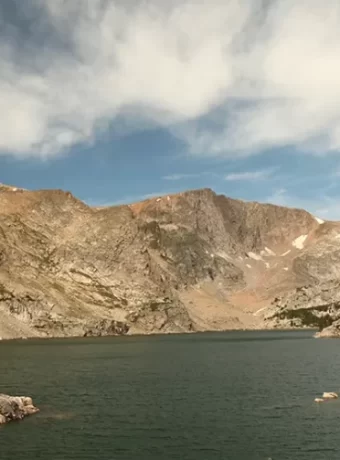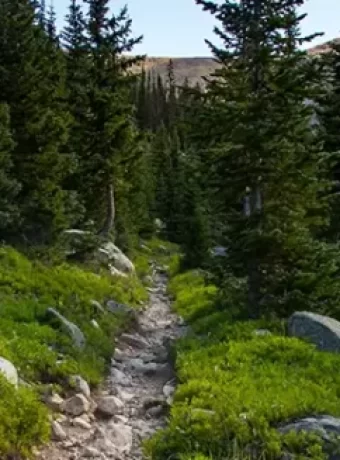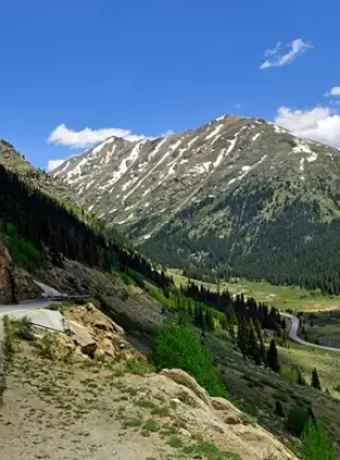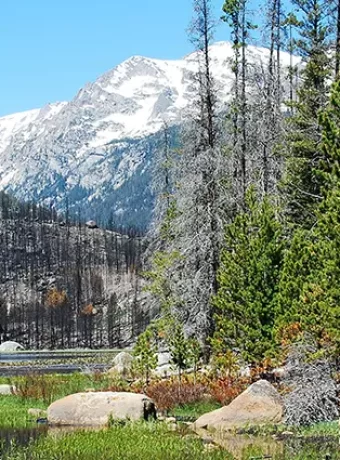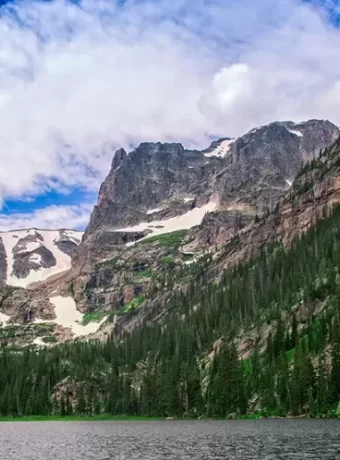Fly Fish Clark Fork River: Deer Lodge to Paradise MT
Ever dreamed of casting your line into the stunning waters of the Clark Fork River? From Deer Lodge to Paradise, Montana, you’re in for an unforgettable fishing trip. Ready to fly fish Clark Fork River from Deer Lodge Montana to Paradise Montana? You’ll navigate narrow banks brimming with brown trout and find hotspots teeming with diverse fish populations.
This river isn’t just about catching fish; it’s a journey through breathtaking scenery and vibrant ecosystems. Whether you’re looking for serene float trips or tips on seasonal fly selections, we’ve got you covered. So gear up! Let’s reel in those key takeaways that will elevate your fishing experience along one of Montana’s longest rivers.
I have spent over 2 decades floating, fly fishing, camping and guiding the Clark Fork River.
Table Of Contents:
- Fly Fishing the Upper Clark Fork River
- Middle Clark Fork River Fishing Hotspots
- Middle Clark Fork River Fishing Hotspots
- Targeting Trout on the Lower Clark Fork River
- Accessing Prime Fly Fishing Sites Along the Clark Fork River
- Seasonal Fly Selections for Success on the Clark Fork
- Comparing Fishing Experiences Across Montana’s Rivers
- Monitoring Flow Rates For Optimal Fishing Conditions On The Clark Fork
- Wildlife And Natural Beauty Encounters While Fly Fishing On The Clark Fork
- FAQs in Relation to Fly Fish Clark Fork River From Deer Lodge Montana to Paradise Montana
- Conclusion of Fly Fish Clark Fork River
- Visit the World with a Fly Rod in Hand
Fly Fishing the Upper Clark Fork River
Imagine stepping into the upper Clark Fork with your fly rod in hand, where brush-choked banks challenge even seasoned anglers. Here, you’ll find an environment reminiscent of a spring creek teeming with large brown trout. It’s not just about casting a line; it’s about mastering the unique characteristics that define this stretch from Deer Lodge to Warm Springs.
Navigating Deer Lodge to Warm Springs
The terrain here asks for more than just patience; it demands strategy. Anglers must be crafty when maneuvering through narrow passages and dense vegetation. A stealthy approach is key as these waters are clear enough for fish to spot you before you spot them. The Warm Springs Wildlife Management Area, close by, nurtures these pristine conditions, contributing both protection and nourishment to local aquatic life.
For those seeking solitude on their fishing trip, rejoice because this section sees less fishing pressure compared to other Montana rivers like Rock Creek or Big Hole River — yet still offers excellent fly fishing opportunities.
Spring Creek Tactics
In spring creek-like sections of the upper Clark Fork, success hinges on finesse and precision. Dry flies become artful tools—imitations like mayflies or caddisflies can fool discerning trout lurking beneath undercut banks or riffles created by feeder streams entering the river flows gently at times but remains ever unpredictable.
To really thrive in such conditions consider focusing around access sites where feeder streams join forces with main currents—a strategic position allowing one access site after another filled with promising casts near wildlife management areas without having to navigate fast current with too much effort.
Middle Clark Fork River Fishing Hotspots
Moving downstream towards Missoula reveals changes within our beloved fork river: middle stretches present diverse populations ready to meet your lure while several bridge crossings provide ample opportunity to get right to the heart of the action no matter which direction you travel from—even if starting off at the Idaho border and heading eastward in Montana downstream.
Clark Fork Fly Fishing Tip:
Step into the upper Clark Fork for a fly fishing adventure that challenges and rewards with its spring creek vibe and hefty brown trout. Stealth, strategy, and finesse rule these waters where solitude meets superb angling away from the crowds.
Middle Clark Fork River Fishing Hotspots
Imagine casting your line into the vibrant waters of the middle Clark Fork, where every ripple could signal a strike from Montana’s spirited trout. This section of river, stretching from Warm Springs to Missoula, serves up some prime fishing spots that will get any angler’s heart racing.
Navigating Between Access Sites
The abundance of bridge crossings along this stretch offers good access for both wading and float fishing. Each access site is like a gateway to new adventures on water. At these points, you can step right into a world teeming with diverse fish populations eagerly waiting beneath the surface. Remember though, recent temperature spikes have put brown trout numbers on the decline—so keep an eye out for other thriving species as well.
When you’re ready to wet your lines in these enticing waters, start at access sites like St Regis or Forest Grove. They give fly fishermen opportunities aplenty without much elbow-jostling thanks to manageable fishing pressure.
Finding Success Around Warm Springs WMA
Closer to Warm Springs Wildlife Management Area lies another hotspot where feeder streams enrich the main flow creating ideal habitats for fish—and perfect scenarios for anglers using dry flies or streamers. With each cast here within sight of forested banks and wildlife spectacles, it’s not just about hooking fish; it’s also about immersing yourself in nature’s unspoiled gallery.
Warm Springs ponds offer some incredible fly fishing. Baetis patterns in the honey hole with startling results. My choice fly rod 9′ six weight in the ponds. Set up includes a Spectre fly reel spooled with Spectre Distance Presentation Fly Line.
The management area itself, beyond its role in conservation and habitat protection provides an excellent backdrop against which one can refine their spring creek tactics amidst scenery that could make even seasoned travelers pause in awe.
The Stretch Downstream: A Melting Pot Of Opportunities
Past Warm Springs WMA towards Missoula is where things really heat up—literally and figuratively speaking—for those seeking excellent fly-fishing experiences along miles downstream by fast currents and brushy banks ripe with opportunity under Montana skies. Here rests Anaconda Settling Ponds—a unique feature known among locals as an off-the-beaten-path locale offering calm pockets amid faster flows great for testing various nymphs or emergers against savvy resident trout.
This long river segment also opens doors—or rather waves—to floaters who prefer trading boots for boats while chasing down elusive quarry among longest rivers twists turns before entering bustling Missoula town proper all setting stage unforgettable moments rod hand life memory bank don’t forget check real-time data flowing conditions through resources such USGS stream gauges online tools plan trip optimally timing key remember.
Sure, let’s give it a shot. Could you provide me with the content that includes the paragraph needing revision?
Hit the middle Clark Fork for a thrilling fly-fishing experience, with hotspots from Warm Springs to Missoula. Easy access sites open doors to diverse fish populations, while conservation areas offer serene backdrops perfect for refining your technique. Downstream awaits more adventure with unique spots like Anaconda Settling Ponds and chances for float fishing towards vibrant Missoula.
Targeting Trout on the Lower Clark Fork River
If you’re itching for a fight with some of Montana’s most spirited trout or pike, look no further than the lower stretches of the Clark Fork River from Missoula to Paradise. With slower currents and an abundance of fish that can tip scales past twenty pounds, this part of the river is a fly fisher’s daydream.
Navigating Seasonal Patterns for Rainbow Trout
The changing seasons bring about shifts in fishing strategies, especially when targeting rainbow trout. In springtime, high water levels may make wading tricky but they also stir up plenty of food, which means active feeding and ample opportunities if you know where to cast your line. Summer heat calls for hitting deeper pools during dawn or dusk when these clever swimmers are out to play. Come fall, get ready for aggressive pre-spawn behavior as rainbows gear up for winter — big appetites mean more chances at landing a trophy.
And don’t forget about those sneaky pike lurking beneath. They’re particularly fond of ambush points like weed beds or logjams so consider streamers that mimic wounded baitfish; sometimes bigger really is better here.
Pike Fishing: Tackling The Titans Of The Deep
While rainbow trout offer their own brand excitement along the lower Clark Fork near Missoula and Paradise Montana it’s hard not be drawn towards challenge presented by Northern Pike found throughout same waters Especially since we’re talking specimens exceeding hefty twenty pound mark For best shot at one these giants focus around backwater sloughs structure filled areas You might just find yourself hooked into battle will test both skill stamina But remember always handle care conservation mind – ensuring future generations enjoy similar thrilling encounters
Fishing Access Sites: Your Gateway To Success
To maximize your time on water ensure familiarize yourself with various fishing access sites dotted along river These entry points give anglers chance explore hidden gems without battling crowds Plus having variety options allows switch tactics based crowd conditions wind direction much else Mother Nature throws way Ready set launch boat embark unforgettable adventure just footsteps away parking lot What could easier?
A quick glance over real-time data before heading out isn’t a bad idea either. Flow rates greatly affect habitat conditions, so knowing whether they’re running high or low can help you decide to pack waders or leave them at home. Additionally, understanding how to interpret hydrographs is an advantage that can pinpoint potentially successful days ahead. Armed with this knowledge, step confidently onto the bank full of confidence. It’s all about being in the right place at the right moment to strike gold—or rather, iridescent silver in the case of those beautiful ‘bows.
Chase Montana’s mighty trout and pike in the lower Clark Fork River; know your seasons for rainbow action, watch out for sly pike around ambush spots, and use access sites to beat the crowds. Always check water conditions before you head out to hit that sweet spot.
Accessing Prime Fly Fishing Sites Along the Clark Fork River
The quest for that perfect cast and the thrill of a tight line starts with getting to the right spot. On Montana’s storied Clark Fork River, anglers are spoilt for choice with an array of access sites dotting its length from Deer Lodge all the way through Paradise. But let’s get real; knowing where to drop your line is as crucial as choosing the right fly.
Navigating Deer Lodge to Warm Springs
If you’re starting upstream near Deer Lodge, you’ve got your work cut out for ya. The upper Clark Fork challenges even seasoned fishers with its narrow confines and brushy banks teeming with healthy brown trout populations—no place here for rookies or fancy city-slicker techniques. Get ready to flex those angling muscles in conditions akin to spring creek fishing: finesse is key if you want those big browns on your hook.
When plotting your course between these spots, make sure not only your tackle but also your approach is up to snuff. You’ll find several public access sites, like Grant Kohrs Ranch National Historic Site which gives more than just a nod towards history but serves up some prime water too. However, remember that ease of access often means more rods sharing space—so if solitude’s what you’re after, be prepared for a bit more legwork (or wading).
Middle Clark Fork River Fishing Hotspots
As we drift downriver into warmer waters past Warm Springs toward Missoula, there’s no shortage of spots ripe for casting flies—even though our finned friends might favor cooler currents during those dog days of summer. Sure enough, brown trout numbers dip here due partly to rising temperatures but fret not; other species aren’t shy about biting.
Bridges become gateways leading directly into diverse habitats—with St Regis being one such portal—and these bridge crossings offer good entry points without much fuss or muss involved in reaching them.

Targeting Trout on the Lower Clark Fork River
Closer yet still downstream from Missoula lies paradise – well Paradise Montana at least – where rainbow trout dance among slower currents and pike lurk menacingly beneath surface ripples waiting patiently… very patiently… In this stretch known less so by fast current than excellent pike fishing opportunities (some hefty twenty-pounders call it home), strategic timing can yield memorable catches when paying attention to seasonal patterns becomes essential lore amongst locals who know their river best.
I spent a couple hundred days floating and fly fishing from Forest Grove to Quinn’s Hot Springs before they closed the boat ramp to the public. My favorite fly was a flashback pheasant tail of my own design. Olive Thunder Creek Minnows have caught some nice Cutthroat in this section of the Clark Fork River. Woolly Buggers are always a great streamer choice.
River flows change game plans around here quick-smart; keeping tabs on real-time data ensures hitting water at optimal times—a boon given how fluctuating levels impact. So, staying informed about current conditions isn’t just smart—it’s essential for making the most of your time by the river.
Hit the Clark Fork River from Deer Lodge to Paradise, Montana for some epic fly fishing. Brush up on your skills for the upper river’s tricky spots and keep an eye out for cooler currents where trout love to hang. For less competition and more solitude, be ready to explore off-the-beaten-path access sites.
Seasonal Fly Selections for Success on the Clark Fork
The secret to mastering fly fishing times on the Clark Fork River lies in understanding its seasonal whims. The river flows, swelled or subdued by melting snow and rainfall, set the stage for a dance between angler and trout where only those with knowledge of the right flies can truly flourish.
Fly Fishing Spring into Early Summer
As winter loosens its grip and ice gives way to flow, your dry fly box should be brimming with life. Think mayflies – Blue-Winged Olives thrive in cooler temps; their hatches signal it’s showtime. But let’s not forget nymphs: Stonefly nymphs start making moves before they hatch as adults later in June. This is when Montana rivers whisper promises of abundant catches if you play your cards right.
For early risers, spring also brings about a feast beneath the surface—caddis larvae are like underwater gold dust along these feeder streams flowing into our beloved fork river.
Summer’s Dry Fly Dreams
Come summer heat waves, terrestrials become trumps—you’ll want ants, beetles even grasshoppers at hand because that’s what fish feast upon under sun-drenched skies above Missoula Montana. Yet do remember evenings bring caddis flights; so stash Elk Hair Caddis ready for dusk displays along rock creek edges where water stays cool enough all day long.
A hot tip? Keep an eye out around Warm Springs Wildlife Management Area—the ecosystem here supports diverse insect life which means more food options leading to potentially excellent fly fishing moments worth capturing.
Fall Brings Big Rewards but Greater Challenges
Autumn anglers face fast current changes due to rain events creating tough conditions especially miles downstream from access sites towards Idaho border areas near Paradise Montana—yet rewards can be hefty. Trophy-sized browns chase large streamers mimicking baitfish swept away by stronger currents now prevalent throughout this longest rivers stretch through state lands well-known among seasoned fly fishermen alike.
So there you have it—an essential guide ensuring year-round success across various sections whether upper clark lower or middle segments each offering unique experiences tied directly back proper selection based seasonally driven patterns found within waters rich history culture intertwined deeply roots America itself… Happy casting folks.
Match your flies to the seasons for success on Clark Fork River: Blue-Winged Olives in spring, terrestrials like ants and grasshoppers in summer heat, and large streamers for autumn’s trophy browns. Keep tabs on local hatches to stay ahead of the game.
Comparing Fishing Experiences Across Montana’s Rivers
Montana rivers each tell a unique story, especially when it comes to fly fishing. The Big Hole River, with its spirited trout and freestone river charm, stands in contrast to the pastoral serenity of the Bitterroot or the sprawling journey of Clark Fork. Each waterway offers distinct adventures for anglers.
Big Hole River vs. Bitterroot vs. Clark Fork
The Big Hole River is famed not just for its beauty but also as an excellent fly fishing destination where one can wrestle with feisty brown and rainbow trout amidst breathtaking views. A fishing trip down this storied Montana river, known particularly for springtime skwala stonefly hatches, makes any angler’s heart race.
In contrast, floating down the tranquil currents of the Bitterroot brings peace among densely forested banks and sapphire waters that beckon dry fly enthusiasts from all corners. The experience here is marked by patience; a gentle drift might reward you with cutthroat sightings more than elsewhere.
The vast expanse of Clark Fork takes on another character entirely – it embodies diversity along its path from Deer Lodge to Paradise Montana; boasting stretches like Rock Creek or Flathead River feeder streams which are synonymous with stellar fishing access points dotting miles downstream.
Fly Fishing Bighorn River can be an unapparelled dry fly experience. Or fly fishing Kootenai River could be a memory never forgotten. Though a favorite Montana destination Livingston Spring Creeks.
A Tale of Two Trout: Brown versus Rainbow
Diving into specifics reveals further intrigue: While upper sections near Deer Lodge hint at spring creek conditions teeming with large brown trout lurking beneath undercut banks—similarly noted in Warm Springs Wildlife Management Area, middle stretches face declines due largely to temperature rises altering fish habitats noticeably reducing these populations yet offering good bridge crossing accesses—a tale mirrored across many long rivers such as St Regis and Blackfoot River too.
Moving towards Missoula however marks change—the lower Clark Fork shifts dynamics favorably creating havens for both robust rainbow trout numbers (think impressive sizes exceeding twenty pounds) alongside surprisingly adept pike predators lurking within slower currents defining this section up till idyllic Paradise Montana bounds – yes indeed quite literally paradise found for float fisherman alike.
Floating Alongside Fly Lines
And for those whose hearts beat faster at the thought of tranquility, Warm Springs WMA is a sanctuary where wildlife thrives and observers can merge their passion for nature with their outdoor adventures. Here, each journey downriver promises an encounter with the wild that’s sure to satisfy any thrill-seeker or peace-chaser alike.
Clark Fork Fly Fishing Tip:
Montana’s rivers offer unique fly fishing tales: the Big Hole River buzzes with spirited trout, the Bitterroot soothes with its tranquility, and Clark Fork unfolds a diverse journey from Deer Lodge to Paradise.
Fishing in Montana is an adventure of contrasts – feisty brown trout in picturesque settings or rainbow trout alongside pike in Missoula’s calmer waters. Each river delivers distinct experiences for every angler.
Island Hopping Below Paradise
Navigate around numerous islands below Paradise, Montana, providing unique float trip experiences filled with exploration opportunities. As you paddle through this section of the Clark Fork River, you’ll have the chance to discover hidden channels, sandy beaches, and secluded coves. Take your time to explore each island, marvel at the surrounding natural beauty, and create unforgettable memories on this picturesque stretch of the river.
Monitoring Flow Rates For Optimal Fishing Conditions On The Clark Fork
Fishing the Clark Fork River isn’t just about choosing the right fly or perfecting your cast; it’s also a game of timing and understanding the river itself. High flows can turn wading into a dangerous endeavor, while low flows may bunch up fish but make them skittish at your approach.
Using Real-Time Data To Plan Your Trip
To outsmart these conditions, savvy anglers tap into real-time data to hit the water when it’s prime time for fishing. Sites like USGS Streamflow become as essential as any tackle in your kit. They give you live updates on flow rates that let you know if today’s conditions are more suited for fast current challenges or if they favor leisurely casting along brushy banks.
This is where being plugged into local angler communities pays off too. A quick chat with fellow fishermen might reveal that Warm Springs Creek has been generous after recent rainfalls, offering excellent fly fishing opportunities for those ready to venture downstream from Deer Lodge towards Anaconda settling ponds.
Interpreting Hydrographs For Angler Advantage
A hydrograph is not some ancient relic—it’s an angler’s secret weapon. Reading one helps predict how soon before high waters subside following snowmelt or rainfall upstream near Missoula Montana—useful intel since this affects both trout behavior and which sections of the fork offer good fishing spots. If you see steady declines in flow rate over several days on a hydrograph, get ready: wary browns could be yours once normalcy returns.
Bear in mind though, optimal doesn’t always mean lowest levels; sometimes what we want is enough depth so our flies drift naturally without spooking fish hiding under forested banks or behind boulders—the kind of insight gathered only through years trailing rivers from the Idaho border down through long stretches of Montana downstream towards St Regis.
The takeaway here? Monitoring flow rates matters because knowing whether the Clark Fork offers tranquil pools or turbulent rapids impacts everything—from safety considerations to which insects hatch (and thus which dry fly patterns will drive those big hole dwellers wild). So next time before gearing up for another float trip down one of America’s longest rivers flowing majestically past wildlife management areas teeming with life… check those numbers first.
Get the scoop on Clark Fork conditions by checking flow rates. It’s not just safe, it’s smart—helping you figure out when to cast for those elusive trout.
Tune into real-time data and local chatter for the best fishing spots—from Warm Springs Creek to Anaconda ponds, know where to go.
A hydrograph isn’t old school—it’s your edge. Watch those lines dip and plan your trip; a steady decline means it’s time to shine with browns on the line.
Wildlife And Natural Beauty Encounters While Fly Fishing On The Clark Fork
Fly fishing on the Clark Fork River isn’t just about the thrill of landing a trout; it’s also an immersive experience in some of Montana’s most vibrant ecosystems. As you wade through these dynamic waters, keep your eyes peeled for more than just fish – there’s a whole world thriving along its banks.
I guide Glacier Park and did a fly fishing school for 9 years and had more wildlife encounter on the Clark Fork River than any other river in the state. I had a black bear swim into our group sitting on the bank eating lunch. As well as a cow moose and two calves in the middle of the river. And herds of elk swimming by. Not to mention the rams fighting for a mate in Fall below St. Regis.
Bird Watching Opportunities During Hatch Seasons
The rippling currents and hatching insects draw out winged spectators that rival the beauty of any dry fly collection. From ospreys diving to catch their unsuspecting prey to bald eagles soaring overhead, bird watching here becomes as much a part of your day as casting lines. Anglers with a keen eye can spot colorful songbirds flitting between willows or watch waterfowl like mergansers navigating swift river flows.
During hatch seasons, when aquatic insects emerge en masse from the Clark Fork River, bird activity reaches its peak. This phenomenon turns the sky into a bustling hub for avian species looking for an easy meal. It’s during these times that one might glimpse rare visitors such as mayfly-loving phoebes or caddis-craving swallows – adding another layer to an already excellent fly fishing adventure.
Exploring Riparian Zones In Search Of Fauna & Flora
The riverbanks teem with life beyond our feathered friends too. Step quietly near springs wildlife management areas and you might find mule deer grazing at dawn or dusk among brushy banks or beavers meticulously constructing their lodges by twilight. These zones are hotspots where biodiversity flourishes – they’re home not only to mammals but also reptiles and amphibians who thrive in this moist habitat provided by feeder streams entering Missoula.
If botany is more your style, then prepare to marvel at wildflowers dotting floodplains or cottonwoods standing tall against big sky country panoramas around Anaconda settling ponds downstream from Deer Lodge toward Paradise Montana—the diversity here paints a picturesque backdrop against which anglers ply their craft amidst nature’s splendor. Keep exploring down towards Idaho border regions where long stretches reveal clusters of willow shrubs providing shelter for native trout riverside critters alike—a delicate balance maintained within this vast ecosystem called Clark Fork.
Fishing access sites, often located near wildlife management areas, give those armed with rods and reels entry points into these rich habitats filled with both game fish and incredible sights.
Whether chasing after cutthroat in remote forested banks under Mount Sentinel’s gaze outside Missoula Montana or spotting elk while drifting past St Regis—every cast brings potential surprises thanks not only to the diverse wildlife but also to the ever-changing river conditions that challenge and delight anglers. This blend of natural beauty and unpredictable adventure is what makes fishing here an unforgettable experience.
Fly fishing the Clark Fork River is an adventure through Montana’s wildlife-rich ecosystems. Look beyond your line for birds during hatch seasons, and explore riverbanks teeming with fauna and flora—from mule deer to wildflowers—creating a perfect blend of natural beauty and angling challenge.
FAQs in Relation to Fly Fish Clark Fork River From Deer Lodge Montana to Paradise Montana
What kind of fish are in the Clark Fork River in Montana?
The river’s bustling with rainbow and brown trout, cutthroats too. Pike make a splash; they’re growing big out there.
What river runs through Deer Lodge Montana?
The Clark Fork carves its path right through Deer Lodge. It’s part of the town’s natural charm.
Do you need a guide to fly fish in Montana?
A guide isn’t mandatory but can lead you to sweet spots and up your game fast.
Where does the Clark Fork River start in Montana?
The journey begins near Butte, at Silver Bow Creek—Clark Fork’s official starting line.
Conclusion of Fly Fish Clark Fork River
Mastering the upper Clark Fork? Check. You now know how to tackle those narrow, brushy banks from Deer Lodge to Warm Springs with precision and patience. Big browns await your dry fly in spring creek conditions.
Scouting middle river hotspots? Done. Access sites unlocked, you’ve got a roadmap to trout-rich waters between Warm Springs and Missoula where variety thrives despite warmer temps.
Pike on the line down lower? Nailed it. With seasonal patterns in hand, you’re set for success from Missoula all the way to Paradise Montana—slow currents mean big fish.
Float trips planned? Absolutely. Whether braving Class IV rapids or seeking tranquil wildlife encounters, your paddles are poised for adventure across every stretch of this magnificent waterway.
Fly selections sorted season by season? Indeed they are. Your box is ready with an arsenal tailored for whatever these dynamic Montana flows throw at you next time you fly fish Clark Fork River from Deer Lodge Montana to Paradise Montana.



